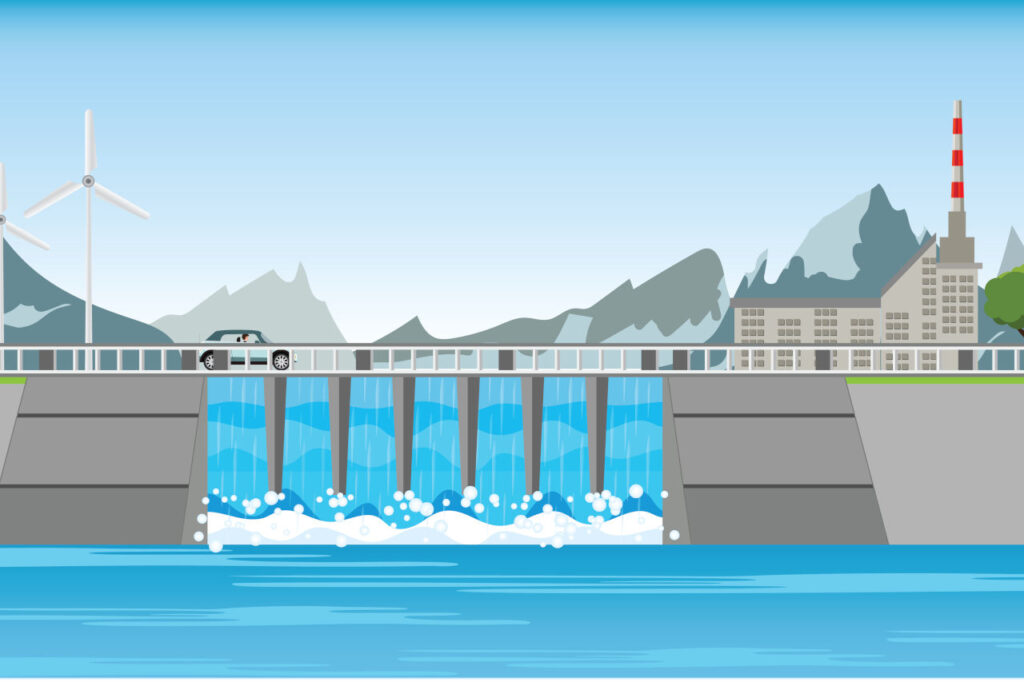With droughts, will we still be able to generate electricity with dams?
Not all dams are designed to generateelectricity; some are used to power agriculture or regulate the flow of rivers. In France, electricity-generating dams account for between 11% and 12% of electricity produced, far behind nuclear power but ahead of wind and solar power.

Jacques Percebois, University of Montpellier
Hydropower also supplies one-sixth of the world's electricity, making it the world's leading source of low-carbon energy. It's an energy that doesn't emitCO2 (even if carbon is produced during the construction of the building) and, above all, it's a means of storing electricity (we store water because we can't store electricity on a large scale under economic conditions). In this case, we speak of a controllable power plant, as we can choose when to produce electricity.
There are three main types of dam: run-of-river dams, which provide continuous turbines on a river; lake dams, which have a large reservoir and can therefore be used for inter-seasonal storage; and pumped storage stations, which consist of two dams, one upstream and one downstream of a penstock. Water is pumped upstream at off-peak times, and electricity is generated at peak times by turbining water from the upstream dam. This optimizes the timing of electricity generation. Remember that a dam's electrical power is proportional to its head and the flow it turbines.
There is still considerable potential for hydroelectric production worldwide, but this potential remains limited in France. It is difficult to build new dams for environmental reasons (preservation of biodiversity), but we can hope to increase the potential of existing dams through new investment.
In any case, global warming is likely to jeopardize the use of hydropower, not only because of the lack of water in rivers, but also because of the reduced snowfall in mountain areas, as snowmelt is a major contributor to river flow.
It is estimated that this warming could reduce the flow of major rivers by around 20% over the coming decades, although the impact will vary from region to region. Taking the Rhône as an example, its flow (and therefore probably that of other rivers) has been reduced by 6% to 7% in 50 years, and the closer the river is to its mouth, the more its flow diminishes.
According to Réseau de transport d'électricité (RTE), hydroelectric production was 35% lower in July 2022 than in July 2021.
What's more, competition between energy and agricultural uses is likely to intensify if water becomes scarcer. River water is also used to cool nuclear power plants, which explains why new power plants are more likely to be built by the sea. Dams sometimes have to release water for irrigation purposes, particularly in summer. But the water released is then no longer available in winter, reducing electricity production.

If you too have a question, ask your parents to send an e-mail to: rf.no1746948911itasr1746948911evnoc1746948911eht@r1746948911oinuj1746948911ct1746948911. We'll find a scientist to answer your questions. In the meantime, you can read all "The Conversation Junior" articles .
Jacques Percebois, Professor Emeritus at the University of Montpellier, researcher at UMR CNRS Art-Dev, University of Montpellier
This article is republished from The Conversation under a Creative Commons license. Read theoriginal article.